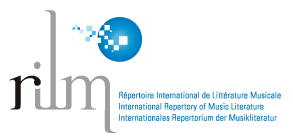Entre la persona y la máscara: el uso del autotune en la canción "Goteo"
Palabras clave:
autotune, persona, vocalidad, trap, DukiResumen
Desde comienzos del siglo XX hemos sido testigos del vertiginoso avance de las tecnologías de grabación, procesamiento y reproducción del sonido. Asimismo, las prácticas de producción fonográfica se han modificado, alejándose de la concepción documental de los medios analógicos de grabación y reproducción, cuyo impacto en el sonido grabado pretendió invisibilizarse detrás de retóricas de la transparencia. Esto se debe, principalmente, a la incidencia que tienen sobre el sonido las operaciones realizadas por los ingenieros y técnicos de sonido, tanto durante su grabación como en su postproducción.
Por otra parte, el advenimiento de las tecnologías digitales dedicadas a la producción fonográfica, paralelamente a la creación hacia fines del siglo XX de la world wide web y el intercambio de información que ella habilitó, propiciaron no sólo una dispersión sin precedentes de tecnología específica para la creación musical, sino también la proliferación de usos creativos inicialmente no previstos en su diseño. De hecho, muchos de ellos cristalizaron rápidamente prácticas que originaron efectos fonográficos singulares, erigidos también como rasgos característicos de diversos estilos musicales.
No obstante, ocurre que la acumulación de prácticas, tanto estandarizadas como creativas, pueden colisionar eventualmente con los supuestos en torno a la autenticidad de un registro fonográfico, y en cuanto al límite en el cual una práctica fonográfica específica puede constituirse como un engaño. En este sentido, el objetivo del presente trabajo es observar y describir los diferentes modos de uso de la tecnología de corrección de afinación conocida popularmente como autotune en el fonograma en vivo de la canción "Goteo", perteneciente a Duki, cantante argentino de trap. Guían nuestro trabajo las siguientes hipótesis: en primer lugar, afirmar que la implementación del autotune es indispensable para el diseño sonoro de la persona musical y su vocalidad resultante. Segundo, sostener que su implementación responde tanto a una decisión correctiva como artístico-creativa.
Descargas
Publicado
Número
Sección
Licencia
Derechos de autor 2022 Cristian Villafañe

Esta obra está bajo una licencia internacional Creative Commons Atribución-NoComercial 4.0.
Atribución/Reconocimiento-NoComercial 4.0 Internacional
https://creativecommons.org/licenses/by-nc/4.0/
Usted es libre de:
- Compartir — copiar y redistribuir el material en cualquier medio o formato.
- Adaptar — remezclar, transformar y construir a partir del material.
- La licenciante no puede revocar estas libertades en tanto usted siga los términos de la licencia
Bajo los siguientes términos:
- Atribución — Usted debe dar crédito de manera adecuada, brindar un enlace a la licencia, e indicar si se han realizado cambios. Puede hacerlo en cualquier forma razonable, pero no de forma tal que sugiera que usted o su uso tienen el apoyo de la licenciante.
- No Comercial — Usted no puede hacer uso del material con propósitos comerciales.
- No hay restricciones adicionales — No puede aplicar términos legales ni medidas tecnológicas que restrinjan legalmente a otras a hacer cualquier uso permitido por la licencia.
Avisos:
No tiene que cumplir con la licencia para elementos del material en el dominio público o cuando su uso esté permitido por una excepción o limitación aplicable.
No se dan garantías. La licencia podría no darle todos los permisos que necesita para el uso que tenga previsto. Por ejemplo, otros derechos como publicidad, privacidad, o derechos morales pueden limitar la forma en que utilice el material.






